#motorola one power
Explore tagged Tumblr posts
Text

me when my sister asks me for flipphone recs
#she wants to get one with the money she plans on making from selling her psp (<- still salty she wouldnt let me even TRY to hack it)#(tho in retrospect in glad its gonna be gone because the vita is supperior in every way and i hate having imposters in my house)#power ranger style teamup of all my resources (my ebay wishlist. pinterest board. yt playlist. phone id reblogs. camera roll. etcetc)#i think shes set on the lg lollypop 2. which im happy about cause its a rlly cute phone!#it was between that and the motorola razr and i have my heart set on getting one in the future so we'd probably have problems w having the#same one#also i just learned today that blackberry has a flip phone? its so cool#psii.txt
5 notes
·
View notes
Text
#Radiogeek - Bluesky abrió el registro para todo el mundo sin invitación - Nro 2438
Creo que la noticia más importante del día, es que la red social de Jack Dorsek Bluesky a todo el mundo, y sin más necesidad de recibir una invitación, pueden seguirme desde mi cuenta @arielmcorg ademas; YouTube está probando un timeline verde, rojo y azul; Nintendo Switch continúa vendiéndose bien en todo el mundo mucho más… Los temas del día: Bluesky abandona su lista de espera y ahora está…
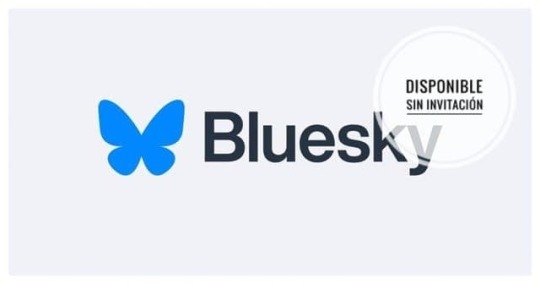
View On WordPress
#cultura geek#culturageek#diario tech#edge 40 pro#galaxy s20 ultra#moto e6s#moto g9 plus#moto g9 power#motoe22#motorola#motorola edge 20 pro#motorola one fusion#noticias tech#PODCAST#podcast tech#PODCASTING#PORTADA#radio tecnología#RADIOGEEK#smasung#tecnología#velvet
0 notes
Text
On Multitasking
Sharing a Computer with Friends
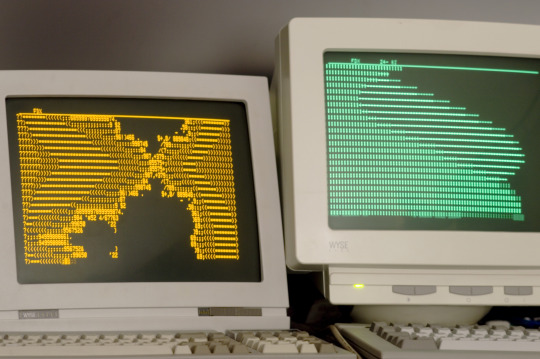
The Motorola 68030 was a decently powerful microprocessor for its day. It is a fully 32-bit processor with 16 general-purpose registers, separate instruction & data caches, memory management unit, 18 addressing modes, over 100 instructions, pipelined architecture, and was available rated up to 50MHz. It was used in computers by Apple, Amiga, NeXT, Sun, Atari, and saw further life embedded in devices such as printers, oscilloscopes, and network switches. It was the kind of microprocessor used for desktop publishing, 3D CAD & animation, photo & video editing, etc.
In short, the 68030 is a microprocessor that can do some serious work. That's part of why I like it so much. It's a real workhorse chip but as far as 32-bit microprocessors go, it's dead simple to build with.
But running a single quick & simple BASIC program hardly seems like an adequate exercise for such a capable chip.
There is a prevailing claim that the 68000 architecture was heavily inspired by that of the PDP-11 or VAX minicomputers — powerhouses of the previous generation of computing. These machines ran entire businesses, at times servicing many simultaneous users. Surely the 68030 with similar capabilities but significantly faster instruction throughput than the decade-older machines would be more than capable of handling such a workload.
As I've mentioned before, one of my end goals for my 68030 projects is to run a proper operating system. Something like System V, BSD, or Linux; a true multi-user system befitting of the 68k's architectural heritage. My programming skills are limited, and getting such a complex project running is still outside my reach. But I am learning, and slowly inching myself closer to that goal.
Recently I built an expansion card for my Wrap030 project to add another four serial ports to it. In the context of the old minicomputers, another serial port means another terminal, which means the ability to serve one more user. My new 4-port serial card should give me the ability to add four new user terminals.
If only I had software capable of doing so.
Excluding symmetric multiprocessing and today's multi-core behemoths, supporting multiple user processes on a single computer processor means dividing time between them. The computer will run one user's program for a little while, then stop and run another user's program for a little while. Do this fast enough and neither user might ever notice that the computer is paying attention to someone else — especially since the computer spends much of its time just waiting for user input.
There are a few ways to accomplish this, but the simplest is to just make sure that every user program is written to cooperate with the others and periodically yield to the next user program ("Cooperative Multitasking"). A good time to do this is whenever the program needs to wait for input from the user or wait for a device to be ready to accept output.
Enhanced BASIC (68k EhBASIC), which I have been running on all of my 68k computer builds, was written in such a way that lends itself well to this sort of cooperative multitasking. It runs a tight loop when waiting for input or output, and while running a BASIC program, it stops at the end of each line to see if the user has pressed Ctrl-C to stop the program. This means that EhBASIC never goes too long without needing to check in with slow I/O devices. All that would needed is a simple kernel to set things up and switch to another user's processes whenever each time one of them is waiting for I/O.
So I set about creating such a minimal multi-user kernel. On startup, it initializes hardware, sets up some data tables for keeping track of what each user program is doing, loads BASIC into RAM, then starts running BASIC for that first user. Whenever a user process needs to read data from or write data to its terminal, it asks the kernel to handle that I/O task for it. The kernel will save the state of the user program to the data table it set up in the beginning, then switch to the next user to let it run until it too asks for assistance with an I/O task.
The kernel works through all user processes round-robin until it loops back around to the first user. After restoring the state of the user's process the kernel will service the I/O task that user process had originally requested, and return to let that user process run for a little while again. So all of the other user processes get their chance to run while one is waiting on data, and each process makes sure to allow the others a chance to run for a while when they are in the middle of running their own program.
I was able to throw together a quick proof of concept using the EASy68K simulator. What followed was days of catching all of the tiny mistakes I made, such as saving register A0 to the memory location reserved for register A1, overwriting the value previously saved for A1 and effectively losing both in the process — an error which resulted in BASIC printing only the first three characters of its startup header followed by a long string of null characters.

Debugging was tricky. I was starting from the bottom. No standard library, no existing structure or frameworks to rely on. The kernel process relied on the very same registers the user programs were using. Any changes to register contents by the kernel would affect the user processes. I ended up adding assembly macros to print short statements and register contents to the kernel console to try to get some insight into what was happening. I was able to track when registers came out of the user context save/restore process different than when they went in to find where I had bugs in that process.
This was a challenging project resulting in nearly a thousand lines of very low-level 68k assembly code, all of which I wrote and rewrote multiple times before figuring everything out. I've written small pieces of assembly code over the years, but none which required such deep dives into the CPU documentation to discern fine details of how the chip operates. I got there eventually though and now I have an 8MHz 68030 homebrew computer with 2MB of RAM that can run four BASIC programs simultaneously.
I'm going to need more terminals.
#homebrew computer#mc68030#assembly language programming#wrap030#retrocomputing#vintage computing#minicomputer#cooperative multitasking#pdp-11
157 notes
·
View notes
Text
I think if we are going to have these age gaps in really all of the ships we should just accept that fact and work with it. Like I think Rags and Jax would fight over the validity of One direction and he would have to be the one to break it to her that almost the entire cast of That 70s show is canceled now. (Deserved btw)
He will pretend to not know anything from before 2010 just to fuck with her. But he will under no circumstance admit when he actually dosent know what something is, like he spent record time bullshitting about Motorola before she catches on, and now she knows that his general knowledge of things is the exact oposite of what he says.
They have that talk any 2000s kid has had with someone born in the 90s where they have to give them the reality check of the fact that they both lived through MP3s and Disney channel like theyre not special.
EVERY SINGLE PERSON in the circus has watched a diferent version of the power rangers and they are all at eachothers throats about it constantly.
242 notes
·
View notes
Text
Junge - Sebastian Vettel x reader

Sebastians Parents hate his career choice but at least you're here.
This is like a prequel to THIS fanfic - please beware that Sebs actual parents are incredibly cute and supportive and also i didn't mean to make like consistent songfics yet here we are. Its about "Junge" by "Die Ärtze"
hahahahaha
America's West, the vast prairie
And right in the middle of it: A small house
And in it: A concerned mother
2023 - Sebastian has just announced his retirement. You, his trusty Engineer since the Toro Rosso Days have spent the day looking back and reminiscing. Throughout the years you’ve had people come and go in your lives, but only you two and Britta, his manager, were truly consistent. One Group of People you absolutely couldn't count on were his parents.
They happily supported his Kart Career but going into F1? Never, F1 was for nobodies and troublemakers. If asked in which Michael would fall, they’d just say “Schumi is an exception”
Throughout the BMW Sauber Testing Years Seb would exist in the car given to him by BMW, friends apartments or hotels rented by Sauber themselves but never anything consistent. Once the move to Torro Rosso happened, with you becoming his equally young engineer, Red Bull made the decision to rent an apartment for you to share. Although you weren't a Red Bull Junior, Fate brought it this way.
You’d taken way too many angry calls of Sebs Parents, causing you to one day chuck his mobile phone down the toilet- He was enraged but life soon improved until the worst day happened. Your apartment was small yet cozy with each of you decorating their room lively. His covered in trophies and race suits, yours with study notes and smart looking graphs. Both however representative of your interests, with your shared common space housing your gaming consoles, a popcorn maker you bought thinking you’d use it a lot and a massive pullout couch someone put out for free which you transported home hanging off Sebs BMW X3
Boy (Boy), why haven't you learned anything?
Look at Dieter, he even has a car!
Why don't you go to Uncle Werner's workshop?
He'll give you a permanent employment, if you ask him about it
Boy (Boy, Boy)
That was the first thing barreling out of a phone held to your ears.
Sebastian and You had just entered the Red Bull Factory during off week to test new parts on the car. You, additionally, had more classes on being a Race Engineer. While you already were supporting him during races, you still had to study more to become better.
Just as you were about to enter the elevator, Helmut Marko came angrily flying towards you.
“SEBASTIAN VETTEL! THIS IS THE LAST TIME I'M TAKING CALLS FOR YOU!” he shouted, throwing his Motorola towards you both. His moms shriekky noisy voice echoed through the speaker.
His Cousin Dieter was a useless POS, whom his Uncle Werner, the workshop owner, coddled until there was no tomorrow. You had the displeasure of meeting them both when his parents sent them to your shared apartment, in hopes of building bridges. You both however preferred the Fernando Alonso Bridge and set this bridge on fire with a can of gasoline.
They were horrible rude upon intruding on your shared space. Dieter insulting your gaming setup, Werner complaining about your general decor and moving in. You’d gotten very fed up with them, opening the door and telling them to Leave that exact second.
Afterwards you and Seb had celebrated by ordering expensive Delivery Pizza while watching 100% Pirated movies. Most likely an Austin Powers Movie.
And the way you always look, holes in your pants, and always this racket
(What will the neighbors say?)
And your hair too, words fail me - do you have to dye it?
(What will the neighbors say?)
You never come home, we don't know what to do anymore
"DON'T GET THE TUB DIRTY!" you shrieked as Seb was trying to wash the dye out of your hair. You'd attempted to dye your hair purple and black with Seb being the one doing the work. He was, however, not good at being cleanly. He'd gotten dye inside of his gloves, on his pants and covered half of the apartment in the process. The washing out process was equally catastrophic with him getting your old bathroom tiles covered as well.
As some dye was left over, you decided to apply it to his beautiful locks. You both came out very matchy. His hair had him look like a black-purple Raccoon and as he was a skinny boy, he looked more like a hungry raccoon than the fat ones you’d usually see rummaging on TV.
The day after you had an appointment with a piercer to get further piercings, the guy immediately thought you were a couple because of the matching hair. You got multiple Piercings, each of them becoming their own memory for the future. You still remembered Brittas Expression as you turned up on Monday with all the metal jingling of your ears and in your face.
What you hadn't however expected, was receiving an invite to Sebastian's Aunts Birthday Party. The Raccoon dye in his hair greatly contrasted the grown up BMW you found yourself in as you two were approaching Heppenheim. Seb took you along as an emotional support animal to better endure the party. You had met his parents before, the day they turned up at your house and another when they turned up at the factory. The day they had turned up at your house, you had your lovely neighbor open the building's front door. She was a lovely lady with hearing issues so you could be as loud as you wanted without bothering her. She often would cook for you in turn helping her with heavy tasks. She shushed them away and made you a hearty meal.
As the car pulled into his old home's driveway, you clearly saw people rushing towards the front door and stumbling out. Seb was clutching the wheel tightly, you both had been driving all the way from Austria so you were already pretty tired.
As you stepped outside you could hear his mom let out a surprised scream, it getting louder as Sebastian stepped out. Your favorite Piercing (a chain connecting from your lips to the ear) was glittering under the porchlight as his little brother rushed out, pushing his mom aside. He jumped upwards into Sebs Arms, possibly being the one most excited for his return.
“Who is this…Woman?” his mom asked, almost snakelike.
“My Race Engineer and Roommate, Y/N”, Seb stated while brushing through his brother's hair.
Boy (Boy) don't break your mother's heart
It's not too late to enroll at university
You used to be interested in animals, wouldn't that be worth pursuing?
Your own vet practice, Boy
The dinner was uncomfortable to say the least. His aunt was to your surprise the one married to Werner, so he, the aunt and Dieter kept giving you dirty looks. His grandparents were equally unhappy with your both looks. Meanwhile his little brother was trying to show him pictures and awards. His Mom didn’t miss a single Chance to insult his driving career, only his dad stayed quiet. Then she started, talking about his love for animals and proposing he should become a vet again. A proposal, she kept repeating uselessly.
Finally she dragged him away and his little brother approached you with shimmering eyes, inviting you to his room to show you his collection of things.
You happily took the chance to flee from annoying relatives as you settled onto Fabians Bed, the sheets with car print giving way under your bum. The quiet mumbling from downstairs being way more endurable than the massively loud chatter. You would always pick the sound of a screaming V10, even if it would blast your hearring away. It would at least protect you from the pain of being repeatedly and hiddenly insulted.
knock knock
His father came in, face pulled into a mildly sad expression as he sheepishly stood in front of the room's door. you eyed him, waiting for more insults of your person to be hurled at you.
Instead however, he gave you a bag.
“Y/N, right?”
“Yeah”
“Please” he was a quiet man, his age clearly visible on his face. “Please give this to Sebastian. Heike, she… She isn’t herself . This isn’t like her. But Seb, he should have this back.”
You take the bag and gingerly lay it on the mattress next to you.
“If she’s gotten so bad, why don’t you leave her?”
“I promised to stick to her, in good and bad times.”
And the way you always look, piercings in your nose, and always this racket
(What will the neighbors say?)
Electric guitars and always these lyrics
Nobody wants to listen to that
(What will the neighbors say?)
You never come home, so much bad company
We will disinherit you
(What will the tax office say?)
How is it all going to end, we are worried
Seb and You were finally back home. Home, yes that’s what Austria had become for you both.
The apartment was quiet until you rummaged through the cupboard, pulling out an Electric Guitar and its required equipment. You gave Seb a cheeky grin before proceeding to play Wonderwall by Oasis. “Not Wonderwall…” Sebastian moaned.
You handed him the Guitar. “Then play something Better, Starboy!”
“But I don't know how to?”
“Just let it out!” you screamed before stomping around the living room, tumbling over collections of varying junk and memorabilia.
clinggggg
You’d stumbled over the long forgotten bag his father had handed you. The Guitar abruptly stopped as Seb dropped it onto the Sofa while staring the bags contents
His first trophy, his favorite stuffed animal and his laminated photos of meeting Michael for the first time.
“Where did you get those from?” Seb asked with anger lacing his voice.
“Your father gave them to me.”
He looked between you and the bag's contents, difficulty enshrining his expression as you bent down, picking up the trophy. You lifted it, brushing your shirt over it. After a serious glance you shoved his newest trophies to the side and placed it smack dab in the middle. You could clearly imagine the little, then blonde boy, bursting with pride upon being handed it by his childhood Idol Michael Schumacher.
And you were such a sweet child
And you were such a sweet child
And you were such a sweet child
You were so sweet
And always your friends, I bet you all take drugs
And always this racket
(What will the neighbors say?)
Think of your future, think of your parents
Do you want us to die?
144 notes
·
View notes
Text
Sector V's Cell Phones and Their Backgrounds
Hey there! I’ve been thinking about what kinds of phones Sector V would have and, more importantly, what their wallpapers would look like. These are all just my headcanons, but I think they really reflect each character’s personality and quirks. Let’s dive in!
Nigel Uno
Phone Type: Nigel strikes me as someone who doesn’t care about flashy tech. He’d have an older Google Pixel or a Moto G—something practical, durable, and reliable for all those mission plans.
Case: Plain black or grey, because anything decorative would distract him from his leadership duties. It’s scratched and a bit worn, just like Nigel after a tough mission.
Wallpaper: Nigel starts with the default wallpaper. He’s too busy saving the world to care about changing it. BUT every so often, Wally “borrows” his phone and changes it to something hilarious, like: A meme-worthy picture of Nigel mid-blink with the text, “Do you know the way?” A bad selfie of Nigel that Wally edited with ridiculous filters. Nigel groans about it but usually leaves it for weeks because he doesn’t bother to change it back (or secretly finds it funny).
Hoagie Pennywhistle Gilligan Jr
Phone Type: Hoagie would totally have a Samsung Galaxy S Ultra. He loves gadgets and tech, and the amazing camera would let him document all his adventures and inventions.
Case: A custom comic-book-themed case with stickers slapped on it. Maybe even a Yipper Airlines logo for good measure.
Wallpaper: A constantly rotating slideshow of: Group photos of Sector V, usually funny ones. (Think Wally dodging Kuki’s hug or Nigel looking exasperated.), Family shots, especially goofy moments with Tommy., Candid selfies with Bradley, his fellow tech buddy. Hoagie’s gallery is basically an archive of good memories, and he’s proud of it.
Kuki Sanban
Phone Type: Kuki would 100% have a Samsung Galaxy Z Flip, because it’s cute, trendy, and fun—just like her! She’d love the flip feature and probably flips it open dramatically just for fun.
Case: A pastel purple case with Rainbow Monkey designs or maybe some sparkly bedazzling. She’d also have a charm or two attached.
Wallpaper: A mix of: Pictures of her and Wally—usually her hugging him while he pretends to be annoyed (but is secretly blushing).bRainbow Monkey fan art or seasonal designs (like Rainbow Monkeys in Christmas sweaters). Silly group selfies with Sector V, often with Wally pulling a face or Nigel looking done with everyone. It’s rare for Kuki to have a solo photo, but if she does, it’s something cute like her holding her favorite Rainbow Monkey plush.
Wallabee Beetles
Phone Type: Wally isn’t careful with his stuff, so he’d need something durable like a Motorola G Power or Nokia XR21. These phones can survive drops, scratches, and anything else Wally throws at them (literally).
Case: A no-nonsense black or camo case, scuffed up from rough use.
Wallpaper:Wally’s wallpapers change as often as his mood. It’s always based on his latest hyperfixation: Street Fighter characters in action. Album covers from punk or rock bands like Green Day. Cool motorcycles or racing cars. Rarely, a group photo of his friends—but only when he’s feeling sentimental. He’ll change it quickly because he gets embarrassed looking at it.
Abigail Lincoln
Phone Type: Abby’s phone would be sleek and stylish, like an iPhone 15 Pro Max or Google Pixel 8 Pro. She’d choose it for its top-tier camera and design.
Case: Minimalist but cool—a clear case or one with abstract patterns.
Wallpaper: Always effortlessly cool and artsy: Photos of street art or graffiti she admires. Stunning landscape or cityscape shots she’s taken herself. Candid pictures of her with Hoagie or Kuki, smiling or goofing around. When she’s in a laid-back mood, she’ll switch to abstract designs or calming color gradients.
#codename kids next door#knd#sector v#kuki sanban#wallabee beatles#numbuh 4#numbuh 3#numbuh 1#numbuh 5#numbuh 2#abigial lincoln#hoagie gilligan#nigel uno
13 notes
·
View notes
Text
At 8:22 am on December 4 last year, a car traveling down a small residential road in Alabama used its license-plate-reading cameras to take photos of vehicles it passed. One image, which does not contain a vehicle or a license plate, shows a bright red “Trump” campaign sign placed in front of someone’s garage. In the background is a banner referencing Israel, a holly wreath, and a festive inflatable snowman.
Another image taken on a different day by a different vehicle shows a “Steelworkers for Harris-Walz” sign stuck in the lawn in front of someone’s home. A construction worker, with his face unblurred, is pictured near another Harris sign. Other photos show Trump and Biden (including “Fuck Biden”) bumper stickers on the back of trucks and cars across America. One photo, taken in November 2023, shows a partially torn bumper sticker supporting the Obama-Biden lineup.
These images were generated by AI-powered cameras mounted on cars and trucks, initially designed to capture license plates, but which are now photographing political lawn signs outside private homes, individuals wearing T-shirts with text, and vehicles displaying pro-abortion bumper stickers—all while recording the precise locations of these observations. Newly obtained data reviewed by WIRED shows how a tool originally intended for traffic enforcement has evolved into a system capable of monitoring speech protected by the US Constitution.
The detailed photographs all surfaced in search results produced by the systems of DRN Data, a license-plate-recognition (LPR) company owned by Motorola Solutions. The LPR system can be used by private investigators, repossession agents, and insurance companies; a related Motorola business, called Vigilant, gives cops access to the same LPR data.
However, files shared with WIRED by artist Julia Weist, who is documenting restricted datasets as part of her work, show how those with access to the LPR system can search for common phrases or names, such as those of politicians, and be served with photographs where the search term is present, even if it is not displayed on license plates.
A search result for the license plates from Delaware vehicles with the text “Trump” returned more than 150 images showing people’s homes and bumper stickers. Each search result includes the date, time, and exact location of where a photograph was taken.
“I searched for the word ‘believe,’ and that is all lawn signs. There’s things just painted on planters on the side of the road, and then someone wearing a sweatshirt that says ‘Believe.’” Weist says. “I did a search for the word ‘lost,’ and it found the flyers that people put up for lost dogs and cats.”
Beyond highlighting the far-reaching nature of LPR technology, which has collected billions of images of license plates, the research also shows how people’s personal political views and their homes can be recorded into vast databases that can be queried.
“It really reveals the extent to which surveillance is happening on a mass scale in the quiet streets of America,” says Jay Stanley, a senior policy analyst at the American Civil Liberties Union. “That surveillance is not limited just to license plates, but also to a lot of other potentially very revealing information about people.”
DRN, in a statement issued to WIRED, said it complies with “all applicable laws and regulations.”
Billions of Photos
License-plate-recognition systems, broadly, work by first capturing an image of a vehicle; then they use optical character recognition (OCR) technology to identify and extract the text from the vehicle's license plate within the captured image. Motorola-owned DRN sells multiple license-plate-recognition cameras: a fixed camera that can be placed near roads, identify a vehicle’s make and model, and capture images of vehicles traveling up to 150 mph; a “quick deploy” camera that can be attached to buildings and monitor vehicles at properties; and mobile cameras that can be placed on dashboards or be mounted to vehicles and capture images when they are driven around.
Over more than a decade, DRN has amassed more than 15 billion “vehicle sightings” across the United States, and it claims in its marketing materials that it amasses more than 250 million sightings per month. Images in DRN’s commercial database are shared with police using its Vigilant system, but images captured by law enforcement are not shared back into the wider database.
The system is partly fueled by DRN “affiliates” who install cameras in their vehicles, such as repossession trucks, and capture license plates as they drive around. Each vehicle can have up to four cameras attached to it, capturing images in all angles. These affiliates earn monthly bonuses and can also receive free cameras and search credits.
In 2022, Weist became a certified private investigator in New York State. In doing so, she unlocked the ability to access the vast array of surveillance software accessible to PIs. Weist could access DRN’s analytics system, DRNsights, as part of a package through investigations company IRBsearch. (After Weist published an op-ed detailing her work, IRBsearch conducted an audit of her account and discontinued it. The company did not respond to WIRED’s request for comment.)
“There is a difference between tools that are publicly accessible, like Google Street View, and things that are searchable,” Weist says. While conducting her work, Weist ran multiple searches for words and popular terms, which found results far beyond license plates. In data she shared with WIRED, a search for “Planned Parenthood,” for instance, returned stickers on cars, on bumpers, and in windows, both for and against the reproductive health services organization. Civil liberties groups have already raised concerns about how license-plate-reader data could be weaponized against those seeking abortion.
Weist says she is concerned with how the search tools could be misused when there is increasing political violence and divisiveness in society. While not linked to license plate data, one law enforcement official in Ohio recently said people should “write down” the addresses of people who display yard signs supporting Vice President Kamala Harris, the 2024 Democratic presidential nominee, exemplifying how a searchable database of citizens’ political affiliations could be abused.
A 2016 report by the Associated Press revealed widespread misuse of confidential law enforcement databases by police officers nationwide. In 2022, WIRED revealed that hundreds of US Immigration and Customs Enforcement employees and contractors were investigated for abusing similar databases, including LPR systems. The alleged misconduct in both reports ranged from stalking and harassment to sharing information with criminals.
While people place signs in their lawns or bumper stickers on their cars to inform people of their views and potentially to influence those around them, the ACLU’s Stanley says it is intended for “human-scale visibility,” not that of machines. “Perhaps they want to express themselves in their communities, to their neighbors, but they don't necessarily want to be logged into a nationwide database that’s accessible to police authorities,” Stanley says.
Weist says the system, at the very least, should be able to filter out images that do not contain license plate data and not make mistakes. “Any number of times is too many times, especially when it's finding stuff like what people are wearing or lawn signs,” Weist says.
“License plate recognition (LPR) technology supports public safety and community services, from helping to find abducted children and stolen vehicles to automating toll collection and lowering insurance premiums by mitigating insurance fraud,” Jeremiah Wheeler, the president of DRN, says in a statement.
Weist believes that, given the relatively small number of images showing bumper stickers compared to the large number of vehicles with them, Motorola Solutions may be attempting to filter out images containing bumper stickers or other text.
Wheeler did not respond to WIRED's questions about whether there are limits on what can be searched in license plate databases, why images of homes with lawn signs but no vehicles in sight appeared in search results, or if filters are used to reduce such images.
“DRNsights complies with all applicable laws and regulations,” Wheeler says. “The DRNsights tool allows authorized parties to access license plate information and associated vehicle information that is captured in public locations and visible to all. Access is restricted to customers with certain permissible purposes under the law, and those in breach have their access revoked.”
AI Everywhere
License-plate-recognition systems have flourished in recent years as cameras have become smaller and machine-learning algorithms have improved. These systems, such as DRN and rival Flock, mark part of a change in the way people are surveilled as they move around cities and neighborhoods.
Increasingly, CCTV cameras are being equipped with AI to monitor people’s movements and even detect their emotions. The systems have the potential to alert officials, who may not be able to constantly monitor CCTV footage, to real-world events. However, whether license plate recognition can reduce crime has been questioned.
“When government or private companies promote license plate readers, they make it sound like the technology is only looking for lawbreakers or people suspected of stealing a car or involved in an amber alert, but that’s just not how the technology works,” says Dave Maass, the director of investigations at civil liberties group the Electronic Frontier Foundation. “The technology collects everyone's data and stores that data often for immense periods of time.”
Over time, the technology may become more capable, too. Maass, who has long researched license-plate-recognition systems, says companies are now trying to do “vehicle fingerprinting,” where they determine the make, model, and year of the vehicle based on its shape and also determine if there’s damage to the vehicle. DRN’s product pages say one upcoming update will allow insurance companies to see if a car is being used for ride-sharing.
“The way that the country is set up was to protect citizens from government overreach, but there’s not a lot put in place to protect us from private actors who are engaged in business meant to make money,” Nicole McConlogue, an associate professor of law at the Mitchell Hamline School of Law, who has researched license-plate-surveillance systems and their potential for discrimination.
“The volume that they’re able to do this in is what makes it really troubling,” McConlogue says of vehicles moving around streets collecting images. “When you do that, you're carrying the incentives of the people that are collecting the data. But also, in the United States, you’re carrying with it the legacy of segregation and redlining, because that left a mark on the composition of neighborhoods.”
19 notes
·
View notes
Note
Hello. So what's the deal with computer chips? Let's say, for example, that I wanted to build a brand new Sega Genesis. Ignoring firmware and software, what's stopping me from dissecting their proprietary chips and reverse-engineering them to make new ones? It's just electric connections and such inside, isn't it? If I match the pin ins and outs, shouldn't it be easy? So why don't people do it?
The answer is that people totally used to do this, there's several examples of chips being cloned and used to build compatible third-party hardware, the most famous two examples being famiclones/NESclones and Intel 808X clones.
AMD is now a major processor manufacturer, but they took off in the 70's by reverse-engineering Intel's 8080 processor. Eventually they were called in to officially produce additional 8086 chips under license to meet burgeoning demand for IBM PC's, but that was almost a decade later if I remember correctly.
There were a ton of other 808X clones, like the Soviet-made pin-compatible K1810VM86. Almost anyone with a chip fab was cloning Intel chips back in the 80's, a lot of it was in the grey area of reverse engineering the chips.

Companies kept cloning Intel processors well into the 386 days, but eventually the processors got too complicated to easily clone, and so only companies who licensed designs could make them, slowly reducing the field down to Intel, AMD, and Via, who still exist! Via's CPU division currently works on the Zhaoxin x86_64 processors as part of the ongoing attempts to homebrew a Chinese-only x86 processor.
I wrote about NES clones a while ago, in less detail, so here's that if you want to read it:
Early famiclones worked by essentially reverse-engineering or otherwise cloning the individual chips inside an NES/famicom, and just reconstructing a compatible device from there. Those usually lacked any of the DRM lockout chips built into the original NES, and were often very deeply strange, with integrated clones of official peripherals like the keyboard and mouse simply hardwired directly into the system.
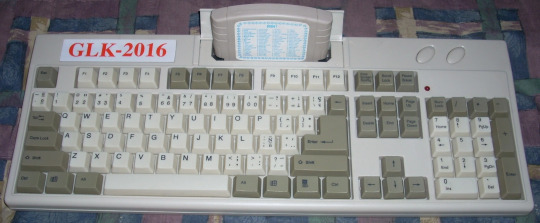
These were sold all over the world, but mostly in developing economies or behind the Iron Curtain where official Nintendo stuff was harder to find. I had a Golden China brand Famiclone growing up, which was a common famiclone brand around South Africa.
Eventually the cost of chip fabbing came down and all those individual chips from the NES were crammed onto one cheap piece of silicon and mass produced for pennies each, the NES-on-a-chip. With this you could turn anything into an NES, and now you could buy a handheld console that ran pirated NES game for twenty dollars in a corner store. In 2002. Lots of edutainment mini-PC's for children were powered by these, although now those are losing out to Linux (and now Android) powered tablets a la Leapfrog.
Nintendo's patents on their hardware designs expired throughout the early 2000's and so now the hardware design was legally above board, even if the pirated games weren't. You can still find companies making systems that rely on these NES chips, and there are still software houses specializing in novel NES games.
Why doesn't this really happen anymore? Well, mostly CPU's and their accoutrements are too complicated. Companies still regularly clone their competitors simpler chips all the time, and I actually don't know if Genesis clones exist, it's only a Motorola 68000k, but absolutely no one is cloning a modern Intel or AMD processor.

The die of a Motorola 68000 (1979)
A classic Intel 8080 is basically the kind of chip you learn about in entry level electrical engineering, a box with logic gates that may be complicated, but pretty straightforwardly fetches things from memory, decodes, executes, and stores. A modern processor is a magic pinball machine that does things backwards and out of order if it'll get you even a little speedup, as Mickens puts it in The Slow Winter:
I think that it used to be fun to be a hardware architect. Anything that you invented would be amazing, and the laws of physics were actively trying to help you succeed. Your friend would say, “I wish that we could predict branches more accurately,” and you’d think, “maybe we can leverage three bits of state per branch to implement a simple saturating counter,” and you’d laugh and declare that such a stupid scheme would never work, but then you’d test it and it would be 94% accurate, and the branches would wake up the next morning and read their newspapers and the headlines would say OUR WORLD HAS BEEN SET ON FIRE. You’d give your buddy a high-five and go celebrate at the bar, and then you’d think, “I wonder if we can make branch predictors even more accurate,” and the next day you’d start XOR’ing the branch’s PC address with a shift register containing the branch’s recent branching history, because in those days, you could XOR anything with anything and get something useful, and you test the new branch predictor, and now you’re up to 96% accuracy, and the branches call you on the phone and say OK, WE GET IT, YOU DO NOT LIKE BRANCHES, but the phone call goes to your voicemail because you’re too busy driving the speed boats and wearing the monocles that you purchased after your promotion at work. You go to work hung-over, and you realize that, during a drunken conference call, you told your boss that your processor has 32 registers when it only has 8, but then you realize THAT YOU CAN TOTALLY LIE ABOUT THE NUMBER OF PHYSICAL REGISTERS, and you invent a crazy hardware mapping scheme from virtual registers to physical ones, and at this point, you start seducing the spouses of the compiler team, because it’s pretty clear that compilers are a thing of the past, and the next generation of processors will run English-level pseudocode directly.

Die shot of a Ryzen 5 2600 core complex (2019)
Nowadays to meet performance parity you can't just be pin-compatible and run at the right frequency, you have to really do a ton of internal logical optimization that is extremely opaque to the reverse engineer. As mentioned, Via is making the Zhaoxin stuff, they are licensed, they have access to all the documentation needed to make an x86_64 processor, and their performance is still barely half of what Intel and AMD can do.
Companies still frequently clone each others simpler chips, charge controllers, sensor filters, etc. but the big stuff is just too complicated.
182 notes
·
View notes
Text
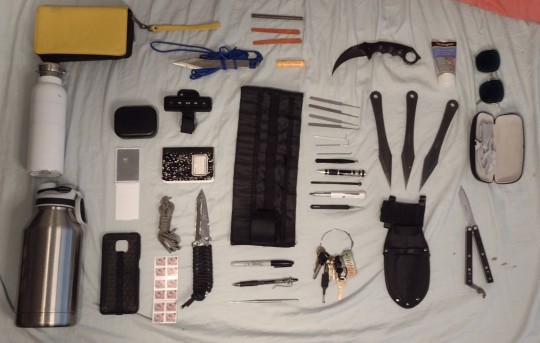
I've been meaning to do an "everyday carry" post for a while, but I've only recently had time to lay everything out. Details below the fold.
items pictured here (starting in the top left, going down roughly in columns):
sketch wallet clutch
20 oz water bottle (usually used for coffee, kombucha, or Gatorade)
64 oz water bottle (exclusively used for water)
earbud case
pocket mirror
UAG phone case (phone, which is being used to take this picture, is a Motorola moto-G power)
rope dart
Bluetooth multimedia controls (mounted on an armband)
notebook
paracord (550lb, approx. 12 feet)
stamps
Mantis Con Brillo fixed edge tanto (with paracord handle)
alumina ceramic sharpening rod (handle broke off, but it's still usable)
two emery boards
Burt's Bees lip balm
small tools roll
sharpie
pilot g-2 pen
6 inch steel needle (used as hair pin)
small diamond rake (in small tools roll)
large diamond rake (in small tools roll)
small hook rake (in small tools roll)
large hook rake (in small tools roll)
three tension tools (in small tools roll)
angled tweezers (in small tools roll)
small-tip screwdriver (in small tools roll)
ring sizer (in small tools roll; I don't really need to carry this but it's in the roll so it doesn't get lost)
large-tip screwdriver (in small tools roll)
needle-tip tweezers (in small tools roll)
keyring
karambit
three nine-inch throwing spikes (with sheath)
sunblock
sunglasses
glasses case (with microfiber cleaning cloth)
Bradley Kimura XI balisong with G10 scales and paracord latch (scales made by Squid Industries before they were a company; just one person with a cnc mill on reddit)
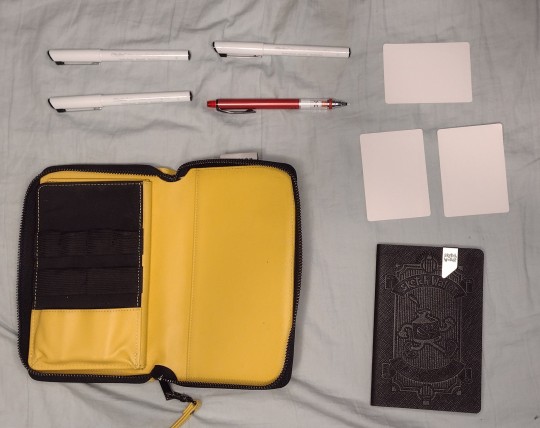
contents of Sketch Wallet:
1.0 mm Ohuhu drawing pen
0.05 mm Ohuhu drawing pen
brush-tip Ohuhu drawing pen
0.5 mm Kuru Toga mechanical pencil w/ red lead
three blank playing cards
sketch book
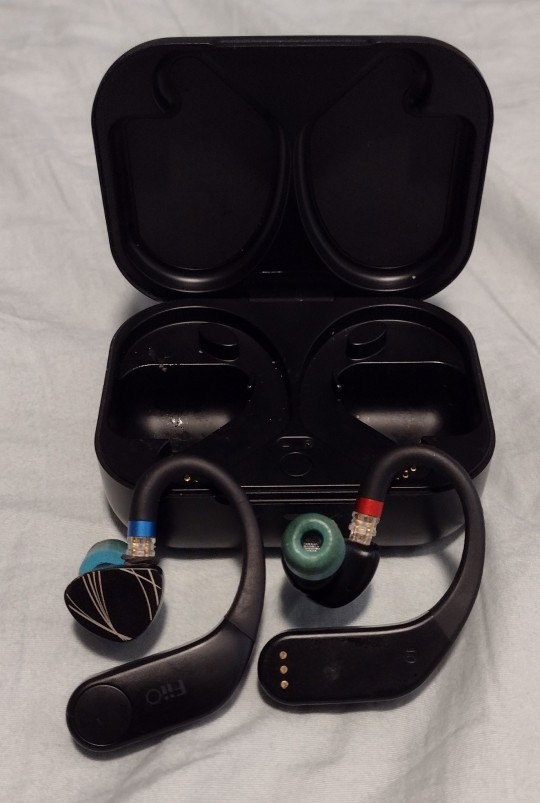
close-up of earbuds. Moondrop Arias with FiiO UTWS3 drivers and memory-foam tips. minor damage to the left side has been mitigated with a small elastic band used as a spacer.
lmk if y'all have any questions or wanna see anything in better detail.
116 notes
·
View notes
Text

Brown University students call for divestment from their pro-Palestinian encampment on the campus' Main Green in Providence, Rhode Island, April 24, 2024. (Anibal Martel/Anadolu via Getty Images)
Brown University rejects pro-Palestinian protesters’ demand to divest from Israel
BY ANDREW LAPIN OCTOBER 9, 2024 5:16 PM
Brown University’s board of governors has rejected a closely scrutinized, student-led proposal to divest from companies with business in Israel.
The rejection allays concerns expressed by some pro-Israel groups that the divestment movement was gaining momentum after the pro-Palestinian student encampments at universities across the country last spring.
“Baruch Hashem,” Rabbi Josh Bolton, executive director of Brown/RISD Hillel, told the Jewish Telegraphic Agency, using a Hebrew term akin to “Thank God.”
Bolton said the vote “is a definitive and powerful rejection of divestment on every level.” Coming so soon after the first anniversary of Hamas’ Oct. 7, 2023 attack on Israel was also significant, he said: “After a year of insanity, antisemitic sloganeering, maligning of Jewish students, this is a day that we can be proud of our institutions.”
The vote was in the works and debated for months before taking place on Tuesday, months before it was expected, by secret ballot. The Brown Corporation agreed with an internal committee that had voted 8-2, with one abstention, to recommend rejecting divestment.
“The Corporation reaffirmed that Brown’s mission is to discover, communicate and preserve knowledge. It is not to adjudicate or resolve global conflicts,” the board wrote in a lengthy statement Wednesday explaining its vote.
The Ivy League school in Providence, Rhode Island was among the first this past spring to agree to hold a vote on divestment in exchange for a peaceful end to its student encampment. The encampments often pushed for divestment, while Jewish students reported being antagonized by the pro-Palestinian activists. Protesters at Brown were motivated by, among other factors, a Palestinian student who was shot in Vermont in November in an apparent hate crime.
After dismantling their encampment, Brown student activist leaders were permitted to make their formal case for divestment to the board; similar deals were also struck at Northwestern University, the University of Minnesota and elsewhere. An internal committee then considered the case but kept its report private until Wednesday, after the formal vote was announced. Leading up to the vote, Brown would only confirm that it was scheduled for October but provided no other details on timing.
Among its chief rationales for rejecting divestment, the committee determined that Brown was not heavily nor directly invested in the 10 companies included in the proposal “and that any indirect exposure for Brown in these companies is so small that it could not be directly responsible for social harm.” Those 10 companies included Boeing, General Electric, Motorola, Volvo and Northrop Grumman, all of which the divestment proposal said “facilitate the Israeli occupation of Palestinian territory.”
The school’s leadership declared it was satisfied with the process and the results of the divestment vote.
“Brown’s mission doesn’t encompass influencing or adjudicating global conflict,” Christina Paxson, the school’s Jewish president, and chancellor Brian Moynihan said in a joint statement shared with the school, alumni and press. “Our greatest contribution to the cause of peace for which so many members of the community have advocated is to continue to educate future leaders and produce scholarship that informs and supports their work. A decision to divest would greatly jeopardize our ability to continue to make this contribution.”
Paxson and Moynihan continued, “If the Corporation were to divest, it would signal to our students and scholars that there are ‘approved’ points of view to which members of the community are expected to conform. This would be wholly inconsistent with the principles of academic freedom and free inquiry, and would undermine our mission of serving the community, the nation and the world.”
Some Jews had been angry that the vote was happening at all. One Jewish member of the Brown Corporation resigned in protest over it, saying the school had capitulated to extremists. He was rebuked by Paxson, who has long argued that the vote was happening in accordance with Brown’s usual procedures for considering divestment-related proposals.
At least 100 Brown faculty members publicly supported divestment, while the Anti-Defamation League and other Jewish groups have ardently argued against college Israel divestments in general. Dozens of Republican state attorneys general had warned Brown that any move toward divestment could result in pushback from their states.
The Rhode Island chapter of the anti-Zionist group Jewish Voice for Peace, which had advocated for divestment alongside other pro-Palestinian groups, did not immediately return a request for comment. The Brown Divest Coalition, together with the national Students for Justice in Palestine movement, posted a profane message on Instagram directed at the Corporation and Paxson, concluding with “Free Palestine” and, in all caps, “All settler colonial institutions will fail.”
Paxson and Moynihan concluded their communication on the vote with a plea that the university community maintain civility even in disagreement.
“Whether you support, oppose or have no opinion on the decision of the Corporation, we hope you will do so with a commitment to sustaining, nurturing and strengthening the principles that have long been at the core of our teaching and learning community,” they said.
12 notes
·
View notes
Text



And here we have part three of the Ultimate Guide to the Gorillaz Dynamic Swap Au!
If you're unfamiliar, the full explanation for what dynaswap is can be found here: [Link]
This part will cover phase 2, as well as what we have for 3 through 5 !
The separate parts of the guide can be found in these links: Phase 0 [Link] Phase 1 [Link] Phase 2 (and onwards) [You Are Here] and Extras [Link]
Or you can see the full guide in my google doc: [Link]
Disclaimer: Please do not bother anyone who was involved with creating the au. They have asked not to be associated with it anymore and we should all respect that.
- [Main Story | Audio] ??? | A call for the Pot household [Link]
- [Main Story | Prose | Image] EXCLUSIVE: We Visited Stuart Pot in Jail [Link] - [Fanart] Street cred [Link] - [Image] Stuart Chat is now available! [Link] - [Image] bad boy loser [Link]
- [Main Story | Prose] My Loyal Subjects [Link] - [Image] Teaser [Link]
The Beginning (without the end) Of Phase 2 | Warnings: Slapstick, Addiction, Mild Sexual Content
- [Main Story | Image | Prose] Let's catch up! [Link] - [Image] Demon Daze [Link] - [Lore | Ask] Stu's new scar [Link] - [Image] Golly geepers whered u get those peepers [Link] - [Lore | Image] Stu's glass eyes [Link]
- [Main Story | Image | Prose] Stu's Prelude [Link] - [Main Story | Audio | Prose] Stu's Prelude | Audio [Link]
- [Image] 2005 [Link]
- [Image | Ask] Feel Good Inc [Link] - [Image] 'Cause I don't get sleep [Link] - [Image | Gif] it daeh [Link] - [Video | Ask] This version of dare is, Different [Link] - [Ask | Lore?] You've got to press it on you [Link]
- [Audio | Image | Video] Ring Ring | Motorola [Link] - [Image] “This is me, cuttin’ an onion.” [Link] - [Image | Ask] Real Egyptian Silk [Link] - [Image] Eat my shorts [Link] - [Lore | Image | Ask] Does Cortez exist in this AU? [Link] - [Image] Power Trip [Link]
- [Image] Close your eyes and see when there ain't no light [Link] - [Image] stupid idiot takes his medicine just as prescribed because hes a good boy [Link] - [Image | Ask] Jake Sheares Fanservice [Link] - [Image] Handsome Stuart [Link] - [Image] happy birthday to you too dickhole [Link]
- [Main Story | Image | Prose] Flight of the Bluebird [Link] - [Image] li’l bastard traveling kit [Link] - [Prose | WIP] Interview Script [Link] - [Image | Ask] Who's the most emotional? [Link]
An End And A Beginning | Warnings: Death, Kidnapping, Abuse
- [Image] WELCOME TO PLASTIC BEACH [Link] - [Main Lore | Ask] What would have been [Link] - [Image] Something brewing [Link] - [Image] Forbidden cyborg russel [Link] - [Image] Concept Art [Link] - [Image] Stu and murdoc pier life [Link] - [Image | Ask] Sleeve A [Link] - [Image] Pirate-y Stu [Link] - [Image | Lore] Demonic Radio [Link]
- [Image] DoYaThing [Link]
Piecing Together What's Left
- [Image | Lore?] A little peak at phase 4 stu [Link] - [Image] bathmeme.jpg [Link] - [Ask | Lore] Who wrote each album? [Link]
- [Ask | Image] Who will be replaced by whom phase 5? (Teaser) [Link] - [Image] Whom Indeed [Link] - [Image] Apparently noodle is visiting townsville [Link] - [Image | Ask] Tranz goes a little differently [Link] - [Image] Stu Wip [Link]
- [Ask] Will stu and murdoc ever get along? [Link] - [Ask | Image] Does stu become nicer to murdoc? [Link] - [Ask | Image] Stu looks so cute [Link] - [Ask | Image] Getting along [Link]
- [Major Lore | Image] The question of stu and murdoc's relationship [Link] - [Image] Bro C'mon. Where's my smooch? [Link] - [Major Lore | Image] Stu, murdoc's, and Several Demons' relationship [Link]
- [Image | Lore?] One last elephant in the room [Link]
- [The End] The official announcement for dynaswap's cancellation [Link] - [Ask] Boundaries for fan content going forwards [Link]
21 notes
·
View notes
Text
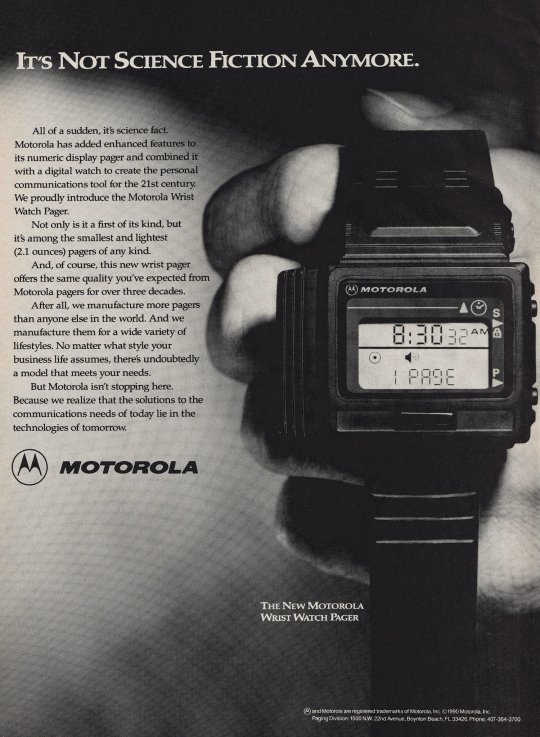
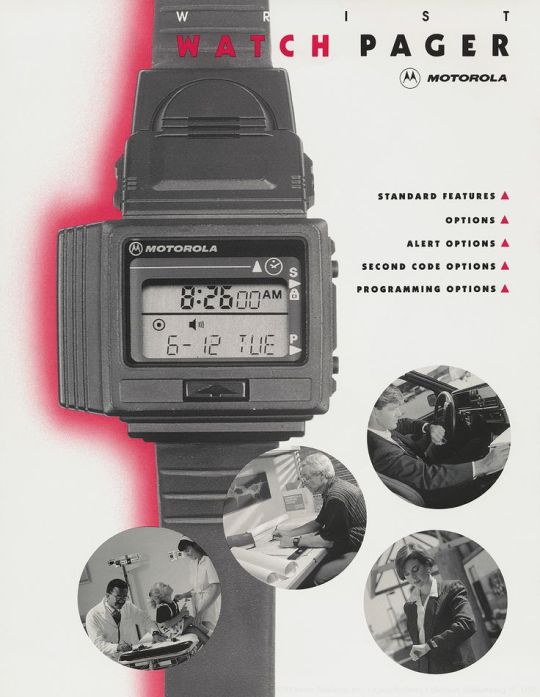
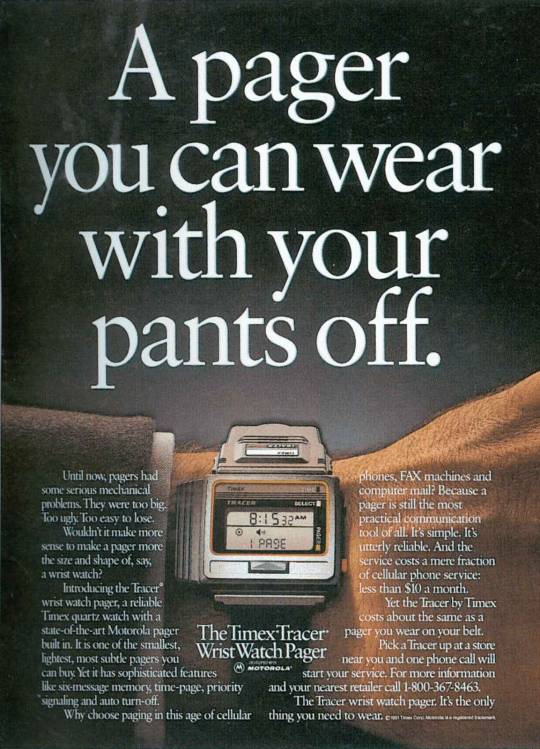
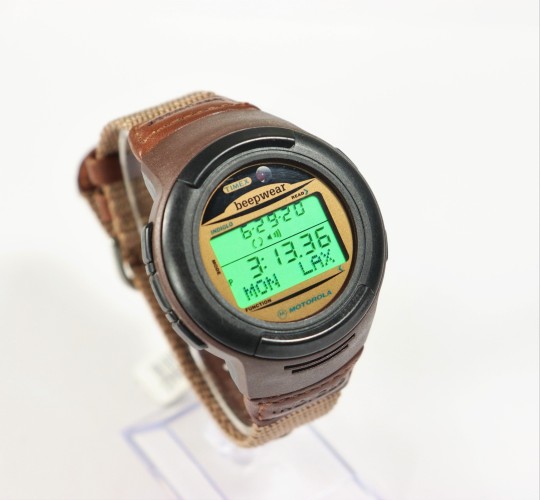

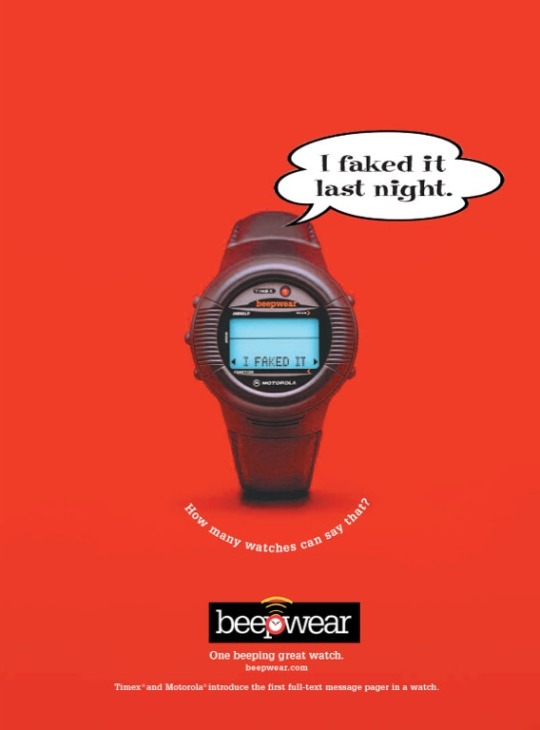
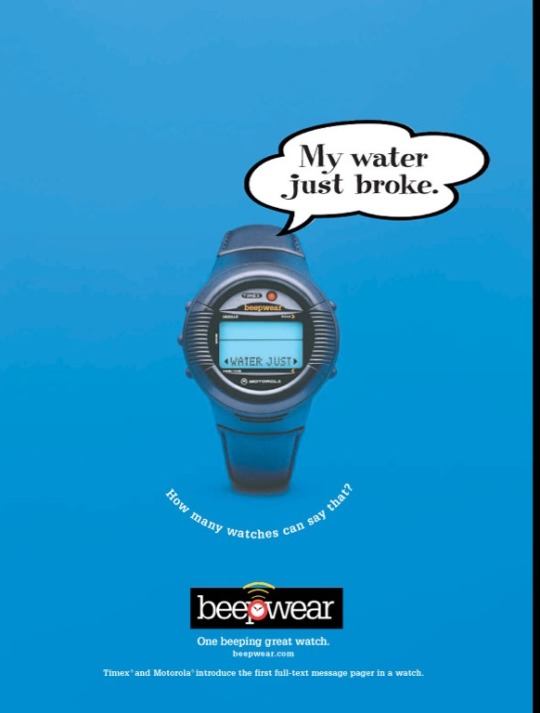
🇺🇲 Explore the Fascinating Fusion of Timekeeping and Communication: Unveiling the Pioneering Motorola and Timex Wristwatch-Pagers that Revolutionized Wearable Technology in the 1990s.
🤝 In 1990, Motorola Inc. made its first attempt to enter the market of electronic wristwatches with a built-in pager (similar devices at the same time were already produced by the Japanese companies Seiko and Casio). The device was called "Motorola Wrist Wach Pager". Since 1991, further production of the devices has been carried out jointly with the Timex Group Corporation under the name "The Timex Tracer Wrist Watch Pager".
👉 Since 1998, further development of the line of electronic watches with the participation of Motorola Inc. and Timex Group was associated with the high-tech "Timex Beepwear Datalink" series. These devices also continued the concept of wristwatch-pagers, but with the integration of the well-known Datalink data transmission platform, which integrates with desktop computer software.
➡️ The Datalink line was introduced in 1994 and was developed in conjunction with Microsoft Corporation as an alternative to conventional PDAs with added attributes such as water resistance and ease of programming. Taken together, all this made it possible to use the “Beepwear Datalink” watch as a full-fledged electronic organizer.
📟 The Beepwear Pager Watch epitomized the convergence of traditional wristwatches with cutting-edge communication capabilities. Introduced in the late 1990s, this innovative device redefined the concept of wearable tech, offering users unparalleled convenience and connectivity on the go.
📞 Equipped with pager functionality, the Beepwear Pager Watch allowed users to receive important notifications and messages directly on their wrist, eliminating the need for separate communication devices. With its sleek and compact design, it seamlessly integrated into everyday life, providing instant access to critical information wherever you went.
⌚️ Beyond its communication features, the Beepwear Pager Watch retained the timeless appeal of a classic timepiece, boasting a stylish and durable design that stood the test of time. With its reliable quartz movement and rugged construction, it was built to withstand the rigors of daily wear, ensuring longevity and reliability for its users.
⚙️ The "Beepware" series, as a joint product of the efforts of Timex Group and Motorola Inc. was patented, and the production of the devices was carried out by the newly created joint company "Beepwear Paging Products". The clock operated in the 900 MHz band. FLEX time was also used, which, if supported by the operator, could synchronize the clock time with the network time, and also automatically adjust to the owner's time zone.
🚀 The launch of the Timex Motorola Beepwear Pager Watch marked a significant milestone in the evolution of wearable technology, showcasing the potential for seamless integration of communication and timekeeping functions in a single device. As one of the pioneering products in this category, it paved the way for future innovations in the wearable tech industry, inspiring a new generation of smartwatches and wearable devices.
💔 However, already in 2002, Motorola Inc. was forced to carry out internal restructuring, including ceasing production and support of its own pagers.
💫 Today, the legacy of the Timex Motorola Beepwear Pager Watch lives on, remembered as a trailblazer in the realm of wearable technology. While newer devices may offer more advanced features, the Beepwear Pager Watch remains a symbol of innovation and ingenuity, reminding us of the transformative power of technology in shaping our lives.
#timetrek#brands#clock#watch#watches#time#companies#company#history#luxury watches#motorola#timex group#timex watches for men#timex#beepwear#pager#wristwatch#wrist watch#wristwatch pda#wristwatch pager#datalink#microsoft#smartwatch#digital watch#casio#seiko#made in usa#telecommunications#innovation#old gadgets
24 notes
·
View notes
Text
#Podcastreview - Del smartphome Motorola Moto G 13 SE
En el día de hoy vamos a estar revisionando el smartphone de gama media el Motorola G13 SE, lanzado en enero del 2023. Muy pronto tendremos el informe completo del equipo, esten atentos. Acceso al podcast Anchor: https://anchor.fm/radiogeek Rss de Radiogeek: https://anchor.fm/s/d0b740/podcast/rss APOYANOS DESDE PAYPAL https://www.paypal.me/arielmcorg APOYANOS DESDE…
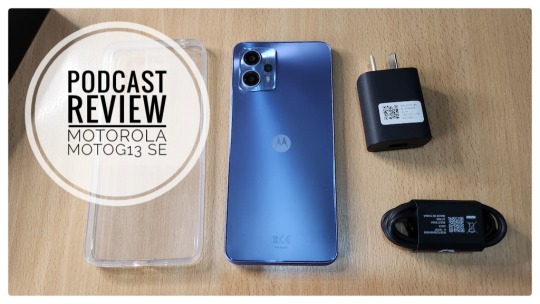
View On WordPress
#cultura geek#culturageek#diario tech#edge 40 pro#galaxy s20 ultra#moto e6s#moto g9 plus#moto g9 power#motoe22#motorola#motorola edge 20 pro#motorola one fusion#noticias tech#PODCAST#podcast tech#PODCASTING#PORTADA#radio tecnología#RADIOGEEK#smasung#tecnología#velvet
0 notes
Note
Idia totally cringes when Yuu busts out his cheap crowly supplied phone. Dude totally decides to give Yuu an upgrade because yeah they really do deserve better.
"You definitely gotta get an upgrade."
Let's be honest. Crowely gave Yuu a crappy flip phone and called it a day lmao. Also yes, musical reference in title because hehe musical make alphian brain go brr. Ngl, I forgot a lot of tech terms while writing this lmao.
----------------------------------------------
-Oh boy. oh boy oh boy. That modified third grade calculator will NOT do! If your going to be Idia's player 2 (platonically or romantically) He will never have you going out with that glorified PCB that seemed like it was always smoking
-Idia is already working away as soon as he see's the phone, making ides in his head before writing them down in a notebook or in his phone for when he arrives back to his dorm. He orders a high rated phone brand(rich ass-), and as soon as it arrives he begins his work on it adding his own modifiers on,making it run faster than a cheetah with sonic's powers.
-He would 100% add on some phone case with a favorite show, like the ones that glow and wirelessly charge the phone so that there is little to no need to charge it between classes. ----------------
Idia had just finished up the modification of the phone he had purchased, and wrapped it up in a box with a nice blue and black bow. Idia of course knew it wasn't Yuu's birthday or anything, but after seeing that somehow functioning electrical fire hazard in Yuu's hand he just couldn't stop thinking of it. Now that the gift was finished though, he had a smile on his face, knowing that this would be like getting a 100 exp booster for Yuu. Idia left his room, Ortho coming with for support, both brothers heading to Ramshackle, Idia fidgeting with his fiery hair as he walked, a few paces behind Ortho to be able to take time to compose himself.
When they arrived, Ortho rang the doorbell, a prolonged, broken chime ringing into the rundown house. Soon Yuu walked out, seeing the two Shrouds, smiling as they spoke. "oh? what brings you two? I thought Idia had a event." they said, taking out their Crowley supplied phone, making the tech-wiz cringe at it, before he nervously walked over to the prefect. "well...I saw that phone you had and thought.. I w-would get and make a b-better one for you.. I mean, that glorified Motorola is pretty terrible.. so, I modified this one." He said, handing the box to Yuu, a smile on his face as he watched the prefect open the box.
"Whoa- Idia this is so cool! How should I pay you back?" Yuu asked, looking to the male who held his hand up "no need-" he attempted to say, but Ortho cut him off with a request. "You can pay us back by continuing to be my big brother's friend! Whenever he's around you his serotonin levels increase tenfold!" He said with a smile, making Idia panic and pull his hood up and pull the tassels to close the opening and hide himself from the others, his face red from being exposed for enjoying a 'normie's' company.
#idia shroud#idia shroud headcanons#twisted wonderland#platonic ortho#ortho be trying to get his bro some proper friends lol#crowley pay your damn child support#twisted wonderland headcannons#alphiwork
184 notes
·
View notes
Text

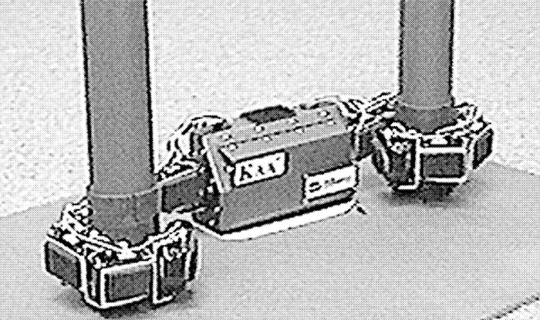

Kaa (1995) by Rajiv Desai, Charles Rosenberg, and Joseph Jones, IS Robotics (iRobot), Somerville, MA. Taking its name from Rudyard Kipling's "The Jungle Book," Kaa is a pair of serpentine arms able to grasp objects by wrapping itself around them, with force servoing giving it that extra squeeze. It has two arms, each 1ft long; a total of thirteen links with individual torque sensors. Each arm terminates in a single rounded fingertip that includes an infrared (IR) proximity sensor. The central body contains power and compute provided by three 8 bit Motorola 6811 microprocessors; one for servo control, one for behaviour control, and the other for IR control. Kaa is best known for acting as the arms of Rodney Brooks' IT (final photo).
46 notes
·
View notes
Text
So I made an app for PROTO. Written in Kotlin and runs on Android.
Next, I want to upgrade it with a controller mode. It should work so so I simply plug a wired xbox controller into my phone with a USB OTG adaptor… and bam, the phone does all the complex wireless communication and is a battery. Meaning that besides the controller, you only need the app and… any phone. Which anyone is rather likely to have Done.
Now THAT is convenient!
( Warning, the rest of the post turned into... a few rants. ) Why Android? Well I dislike Android less than IOS
So it is it better to be crawling in front of the alter of "We are making the apocalypse happen" Google than "5 Chinese child workers died while you read this" Apple?
Not much…
I really should which over to a better open source Linux distribution… But I do not have the willpower to research which one... So on Android I stay.
Kotlin is meant to be "Java, but better/more modern/More functional programming style" (Everyone realized a few years back that the 100% Object oriented programming paradigme is stupid as hell. And we already knew that about the functional programming paradigme. The best is a mix of everything, each used when it is the best option.) And for the most part, it succeeds. Java/Kotlin compiles its code down to "bytecode", which is essentially assembler but for the Java virtual machine. The virtual machine then runs the program. Like how javascript have the browser run it instead of compiling it to the specific machine your want it to run on… It makes them easy to port…
Except in the case of Kotlin on Android... there is not a snowflakes chance in hell that you can take your entire codebase and just run it on another linux distribution, Windows or IOS…
So... you do it for the performance right? The upside of compiling directly to the machine is that it does not waste power on middle management layers… This is why C and C++ are so fast!
Except… Android is… Clunky… It relies on design ideas that require EVERY SINGLE PROGRAM AND APP ON YOUR PHONE to behave nicely (Lots of "This system only works if every single app uses it sparingly and do not screw each-other over" paradigms .). And many distributions from Motorola like mine for example comes with software YOUR ARE NOT ALLOWED TO UNINSTALL... meaning that software on your phone is ALWAYS behaving badly. Because not a single person actually owns an Android phone. You own a brick of electronics that is worthless without its OS, and google does not sell that to you or even gift it to you. You are renting it for free, forever. Same with Motorola which added a few extra modifications onto Googles Android and then gave it to me.
That way, google does not have to give any rights to its costumers. So I cannot completely control what my phone does. Because it is not my phone. It is Googles phone.
That I am allowed to use. By the good graces of our corporate god emperors
"Moose stares blankly into space trying to stop being permanently angry at hoe everyone is choosing to run the world"
… Ok that turned dark… Anywho. TLDR There is a better option for 95% of apps (Which is "A GUI that interfaces with a database") "Just write a single HTML document with internal CSS and Javascript" Usually simpler, MUCH easier and smaller… And now your app works on any computer with a browser. Meaning all of them…
I made a GUI for my parents recently that works exactly like that. Soo this post:
It was frankly a mistake of me to learn Kotlin… Even more so since It is a… awful language… Clearly good ideas then ruined by marketing department people yelling "SUPPORT EVERYTHING! AND USE ALL THE BUZZWORD TECHNOLOGY! Like… If your language FORCES you to use exceptions for normal runtime behavior "Stares at CancellationException"... dear god that is horrible...
Made EVEN WORSE by being a really complicated way to re-invent the GOTO expression… You know... The thing every programmer is taught will eat your feet if you ever think about using it because it is SO dangerous, and SO bad form to use it? Yeah. It is that, hidden is a COMPLEATLY WRONG WAY to use exceptions…
goodie… I swear to Christ, every page or two of my Kotlin notes have me ranting how I learned how something works, and that it is terrible... Blaaa. But anyway now that I know it, I try to keep it fresh in my mind and use it from time to time. Might as well. It IS possible to run certain things more effective than a web page, and you can work much more directly with the file system. It is... hard-ish to get a webpage to "load" a file automatically... But believe me, it is good that this is the case.
Anywho. How does the app work and what is the next version going to do?
PROTO is meant to be a platform I test OTHER systems on, so he is optimized for simplicity. So how you control him is sending a HTTP 1.1 message of type Text/Plain… (This is a VERY fancy sounding way of saying "A string" in network speak). The string is 6 comma separated numbers. Linear movement XYZ and angular movement XYZ.
The app is simply 5 buttons that each sends a HTTP PUT request with fixed values. Specifically 0.5/-0.5 meter/second linear (Drive back or forward) 0.2/-0.2 radians/second angular (Turn right or turn left) Or all 0 for stop
(Yes, I just formatted normal text as code to make it more readable... I think I might be more infected by programming so much than I thought...)
Aaaaaanywho. That must be enough ranting. Time to make the app
31 notes
·
View notes